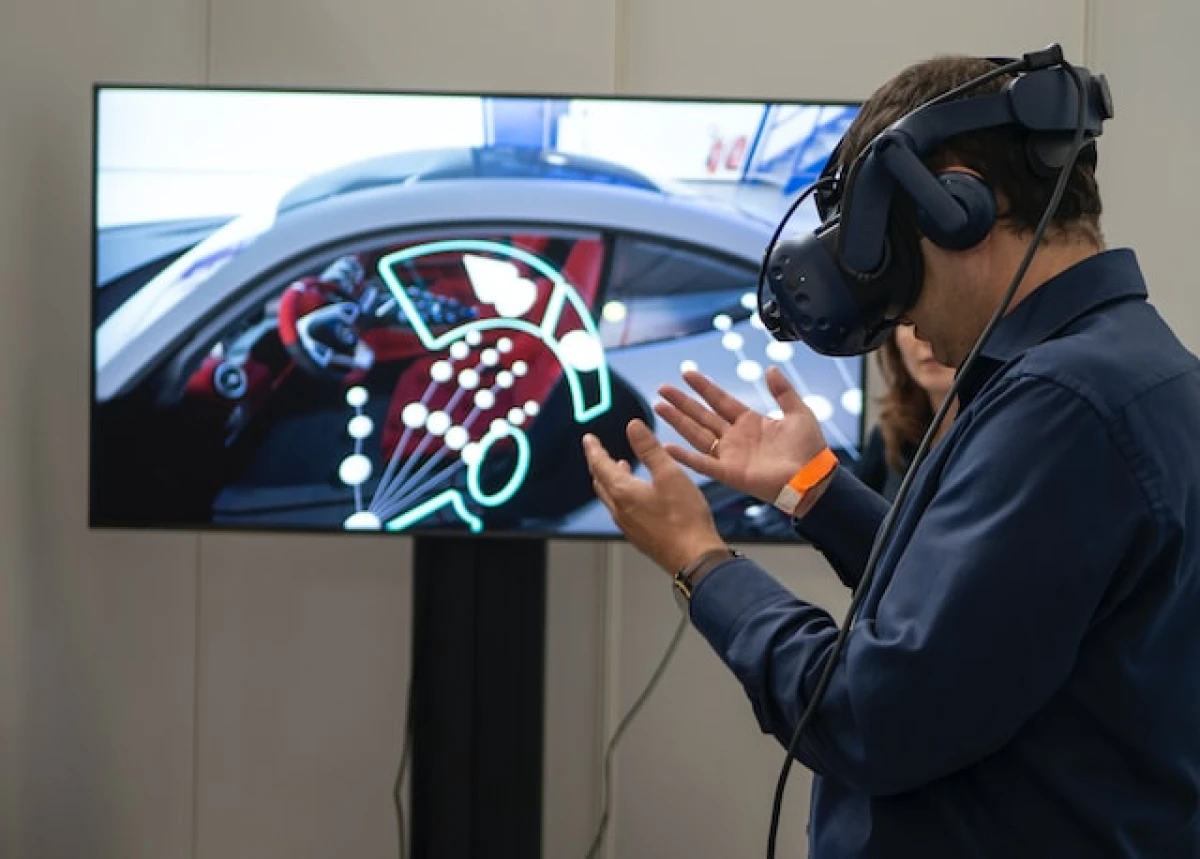Virtual Reality (VR), once the pipe dream of sci-fi nerds or a plot device in films like Tron, is now a widely available technology for consumers and businesses around the world.
Many analysts expect rapid growth in sales over the coming years, but VR has generated feverish excitement before only to fall flat when push comes to shove.
So, should you invest in VR technology?
#VR Technology Stocks
As with most areas, VR stocks vary from the great to the small. Giants include Facebook owner Meta Platforms (NASDAQ: META), which has exposure to the virtual reality market through its Meta Quest VR headsets and its Horizon metaverse project.
Smaller VR stocks include the likes of Immersion Corporation (NASDAQ: IMMR), Vuzix Corp (NASDAQ: VUZI) and Glimpse Group (NASDAQ: VRAR). It’s also worth considering the companies that make the components required for VR technology, such as chipmaker Nvidia (NASDAQ: NVDA).
Like most technology stocks, VR stocks have suffered from a torrid 12 months. For example, Meta Platforms stock has fallen in price by more than 65% since the start of 2022.
While there are no ETFs specifically tied to VR, metaverse ETFs like the Fidelity Metaverse ETF, which have significant exposure to VR stocks, have similarly fallen across the last 12 months.
While this could be perceived negatively, it may also indicate that now is a good time to purchase VR stocks for a relatively cheap price.
#VR Technology Uptake
One concern with virtual reality is that there have been false dawns in the past. In the world of video games, virtual reality products have been commercially available since the 1990s. Despite predictions that the technology would change the gaming landscape within the decade, products like Nintendo’s Virtual Boy largely failed to make a splash.
However, the technology has rapidly advanced since these early missteps, with the emergence of Oculus in the early 2010s appearing to herald a new era of advanced and affordable VR tech. But will consumers and businesses adopt the technology to the extent that analysts currently predict?
#VR Technology Growth Prospects
VR sales are widely predicted to accelerate at a startling rate. For example, data from Statista shows that 2021 saw the number of augmented reality (AR) and VR devices shipped worldwide reach 9.86 million units. The same study forecasted that this is set to rise to 14.19 million units in 2022.
Additionally, consumer and enterprise VR revenue is expected to rise from $11.97bn to $15.81bn between 2022 and 2023.
Much of the VR market’s success appears to rest on the success of the metaverse, the expected next stage in the internet’s evolution. Gaming is still a huge driver behind VR sales, but many VR companies are keen to stress the technology’s potential applications in social media, work, entertainment and more.
In some sectors, this potential is already being realized. For example, some hospitals and healthcare providers use VR technology for things like staff training and patient education.
Data from GrandViewResearch shows that more than 50% of VR revenue in 2021 stemmed from commercial sources, with businesses increasingly using VR to display products and services to consumers.
With so many potential applications, it does appear that VR technology could become an absolutely enormous industry. However, the practicality, affordability and appeal of the technology remains untested on a large scale.
#Glimpse Group Case Study
Glimpse Group (NASDAQ: VRAR) is a great example of a smaller VR technology specialist which displays the technology’s diverse applications. The business is an umbrella for a selection of VR and AR companies that provide enterprise-focused software, services and solutions.
The wide array of subsidiary companies catering to applications from the healthcare, hospitality, marketing industries and more besides, gives the business a strong degree of diversification within the VR marketplace.
The company’s year ended 30 June 2022 saw revenue more than double to $7.3m, following soaring software services revenue growth. However, net loss only fell marginally from $6.1m to $6.0m as total operating expenses increased by 56% to $12.4m.
The year to date has seen the stock decline in value by more than 50% to sit at its current price of $4.85 per share.
Its revenue might be growing rapidly, and the company says it expects further speedy growth, but its cash position of $16.2m of cash and cash equivalents is a potential concern. As the business is currently loss-making, it might need a funding injection unless the VR market explodes in the near future.
#Is VR Technology a Good Investment?
With the majority of forecasts pointing towards major growth in VR unit sales and revenues, VR technology stocks certainly look like an enticing investment. The sheer wealth of potential applications for the technology is also impressive, and it genuinely appears that VR could revolutionize many facets of everyday life.
As such, investors may be hearing about a litany of VR success stories over the coming years. Even so, the touted potential of the industry could be overblown, so risk-averse investors should think carefully about their strategy.
Investing in pure-play VR stocks, or even stocks that are heavily reliant on the success of VR looks like a particularly risky proposition. For example, Meta Platforms, which is betting heavily on the success of the metaverse and its associated VR peripherals, has seen its share price tank this year as its strategy attracts criticism from investors.
A safer bet that would also allow investors to potentially benefit from any explosion in VR popularity would be to back stocks like Nvidia or AMD (NASDAQ: AMD), which construct essential components for the technology.
However, while these chipmakers might be essential to the success of VR technology, they may not yield as impressive returns as stocks with heavier VR exposure.
